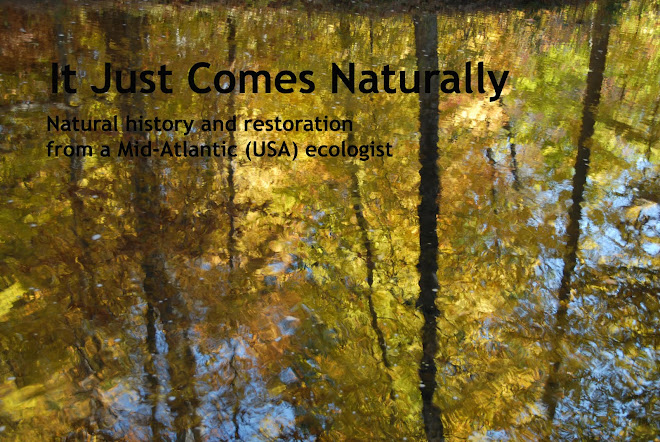 |
| Protecting a tree sapling in a wire cage |
I've got five guys on my stewardship (i.e., maintenance) staff who should be doing this kind of job. However, because the weather was so nice, and because it would have been harder to tell the guys where the trees were located than to just do the job myself, I went out in the field.
The first tree, a linden (or basswood) with a diameter of about 8 inches, was being rubbed by white-tailed deer bucks almost to death. When rutting season comes around, the deer rub their antlers against trees they find suitable and, in the process, scrape off the bark. If they scrape the bark all the way around the tree, it will kill the tree. For some reason, the deer seem to find basswoods irresistible, and they will savage any specimen that is not adequately protected. My staff either encloses the trees in wire cages or they wrap large trees with burlap sacks. In the case of the basswood tree I went out to rescue, the burlap bag had slipped down and the trunk was exposed. So, I firmly reattached the bag and I enclosed the tree in a wire mesh cage.
The second tree I went to rescue was a red oak sapling whose protective wire cage had been completely overwhelmed by the insidious invasive vine porcelain-berry. Imagine the tree being planted in the image at the head of the post completely blanketed by a mass of vines and you get the idea. I cut away and uprooted the vines, replaced the wooden stakes supporting the cage, and generally tidied up the planting spot - I'm an "anal" neat freak.
While I was working, a man stopped to tell me that there was a sizable snapping turtle alongside the trail about 50 feet away. I had just walked the trail to get to the tree and hadn't even noticed the turtle, which looked like a big, gray rock when I went up to see it. Cool! Then, when I went back to the tree to finish up, a woman walked by and thanked me for saving the tree.
She went on to say that my preserve is the one thing in life that keeps her sane and she didn't know what she would do if she couldn't walk the trails and rejuvenate her psyche. She knew my name (though I didn't recognize her), and she concluded by thanking me profusely for being the heart and soul of the preserve. She told me that she had so much gratitude and appreciation for me and and my commitment to the natural world.
Deferential type that I am, I sorta' gave her an "Aw, shucks" response. But, you know what? She really did lift my spirits.


















